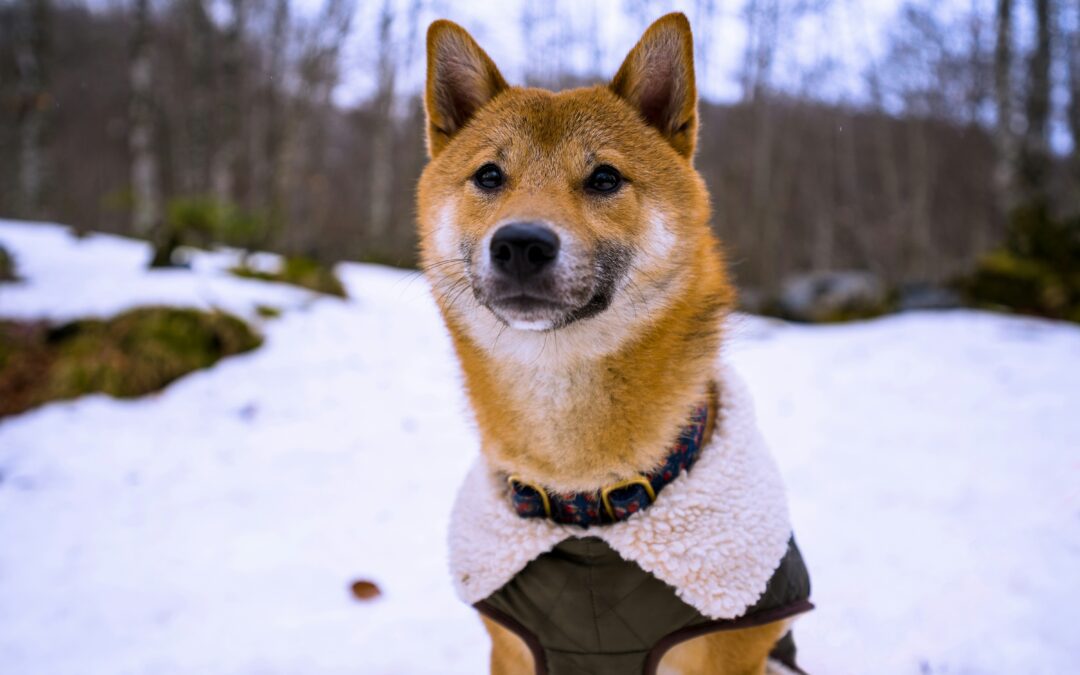As winter blankets us in its frosty chill, people everywhere reach for the cozy warmth of our favorite jackets and parkas to protect us from the elements. But what about our furry friends? Do dropping temps dictate the need for a coat for your canine companion? While some pet owners advocate for the necessity of doggy outerwear to ward against winter’s chill, skeptics contend that dogs come equipped with their own natural insulation by way of their fur. But, before you rush to buy your pup a new parka, or decide their furry fluff provides ample protection, let’s plow into this heated debate and find out if doggy coats are fashion, function, or both.
Like many other issues, the answer to the canine coat conundrum is far from cut and dry. One key factor driving the debate is the diversity of dog breeds. While, for most dogs, their natural coat does serve some function as a protective barrier against the elements — regulating their body temperature in both the cold and heat — the extent to which this is true varies between breeds. Breeds like Siberian Huskies or Saint Bernards boast thick double coats designed for harsh winter conditions. These breeds often revel in the snow, seemingly impervious to the cold. Conversely, short-haired breeds, like Chihuahuas and Greyhounds, may shiver in the frosty air and would benefit from an additional layer of warmth during winter walks. Understanding your dog’s breed-specific needs is a crucial first step in deciding whether outerwear is necessary to protect them from the cold.
But what if you notice your aging Husky shivering on your morning walk? Or what about that mixed-breed rescue your neighbor just brought home? He seems fluffy enough, but who knows what he is or whether he was bred for colder climates. Has he even experienced the chill of a New England winter before? Several factors, beyond breed, contribute to whether or not a dog needs a winter coat. Age, size, health, activity, and even personal preferences play a role in determining a dog’s tolerance to colder temperatures. Each dog must be evaluated as an individual, the decision based on a pet’s physical traits, the local weather conditions, the activity the dog is performing, and their tolerance for wearing clothing.
According to the American Kennel Club (AKC), dogs who fall into any of the following categories would likely benefit from the warmth of a coat in the face of extreme weather and chilly temperatures:
- Small, toy, and miniature short-haired breeds, like Chihuahuas and French Bulldogs, along with young puppies of any breed, often do not have enough body area or insulation to generate and retain adequate heat to keep them warm.
- Low-bodied dogs like Corgis and Dachshunds, might have a long or thick coat but, their short stature leaves their bellies open to skimming the cold, wet, snowy ground.
- Traditionally groomed breeds like Poodles may be clipped or shorn, hampering the natural protection of their coats.
- Lean-bodied dogs with short hair, like Whippets and Greyhounds, often do not have enough natural insulation to stay warm on their own.
- Senior dogs are prone to conditions that may be aggravated by the cold, like arthritis or a weakened immune system. And heat regulation often declines with age, leaving even the most wooly of pups vulnerable to the cold.
- Dogs with medical conditions like heart disease, diabetes, kidney disease, and thyroid disease may also need some help keeping warm, as these ailments often interfere with a dog’s ability to maintain body temperature.
- Any dog, including those bred for colder climates, who has moved from a warmer region to a colder locale will need to wear a coat as their body adjusts to the harsher atmosphere.
Since pets can’t vocalize their discomfort, as a pet guardian you must be vigilantly aware of signs that your furry companion is feeling the winter cold. Reluctance to go outside, shivering, whining, hunching their back, anxious pacing, or lifting their paws off the ground are all indicators that your dog may be struggling with winter’s chill. If you do decide your dog could use another layer, selecting the right apparel is crucial. Consider factors such as water resistance, insulation, and proper fit. Ideally, the coat will cover your dog’s neck, belly, and back and should not have parts that can easily be chewed, dragged on the ground, or restrict motion. A well-chosen coat not only provides warmth but also ensures your dog’s comfort and freedom of movement. Consider taking some measurements of your pup before making a purchase and make sure to have your dog try on whatever you buy to establish a good fit before heading out into the elements. It should be snug around your pet to trap body heat, but not so tight as to cut off circulation or restrict mobility. If your dog seems anxious or uncomfortable wearing clothing — running away when you go to put it on or constantly scratching or biting at the material, don’t push it. For those pups who can’t tolerate being clothed, keep your dog’s time outside as limited as possible and adjust their routine to ensure they still get enough exercise and stimulation, but avoid getting too cold.
In the great debate over whether dogs need coats in winter, there is no one-size-fits-all answer. While some dogs thrive in colder temperatures without additional layers, others benefit from the warmth and protection a coat can provide. Understanding your dog’s unique characteristics, considering the climate, and paying attention to their behavior are key elements in making an informed decision for your dog and ensuring they are comfortable and safe, whether they are frolicking in the snow or enjoying a cozy evening by the fireplace.
*Note: Dogs should not wear coats in mild weather, while indoors, or just for fun. If you are still unsure about whether your dog needs a coat or not, consult your veterinarian.

